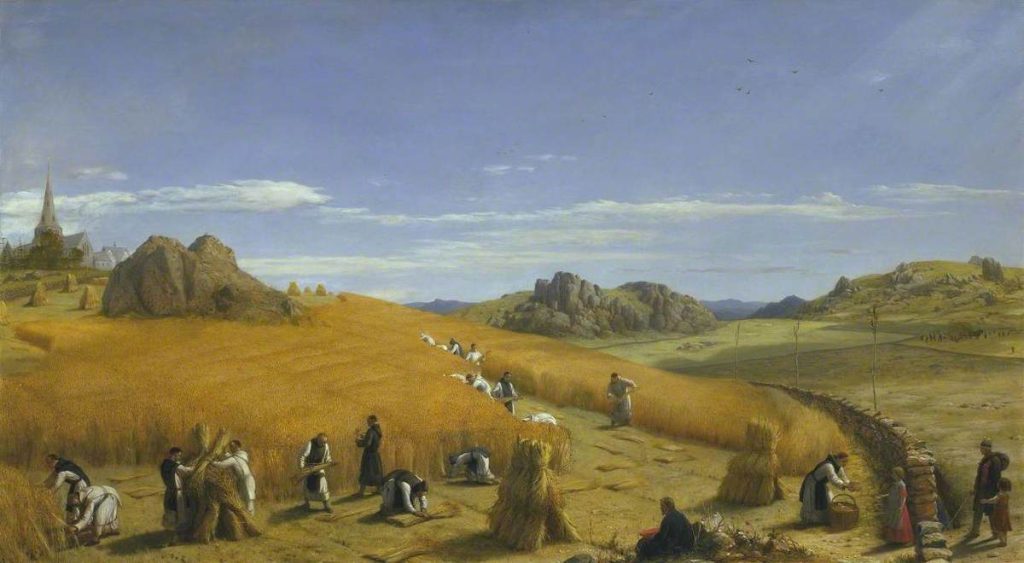“Nothing is to be preferred to the Work of God.”
(Rule of St Benedict, chap. 43)

Catholic commentators and journalists will often write of the civilising effects of monasticism, specifically of the Benedictine variety, and there is good reason for this. Indeed, Christopher Dawson in his Religion and the Rise of Western Culture, notes that ‘It was the disciplined and tireless labour of the monks which turned the tide of barbarism in Western Europe and brought back into cultivation the lands which had been deserted and depopulated in the age of the invasions.’
While he drew upon other rules which were circulating in monastic communities throughout the Christian world of his time, much can be said of the great wisdom that inspired Saint Benedict as he composed his Rule – the flexibility that it affords the Abbot in his governance of the monastery, for example, has no doubt allowed monasteries to flourish in so many different contexts, including here in far flung Australia. However, this is not, in my humble estimation, the particular genius of the Rule. That, I believe, lies buried in nuce in chapter 43, where the Holy Father Benedict instructs his monks to ‘prefer nothing to the Work of God’, by which he means the principal work of the monks, namely the liturgy.
For pragmatic moderns such as ourselves this seems a pious platitude at best. Sure, we might concede, the work of prayer – specifically liturgical prayer – might be important, especially for the monk, but there are other practicalities which we must attend to first and which must order our days. For Benedict though, the principle which is to order the monastery is the Work of God, the liturgy – all things flow to it and from it. The later image, adopted by the fathers of the Second Vatican Council (1962-65) is apt, it is the ‘source and the summit’ of their monastic lives.
Now, in much of contemporary Catholic culture, this notion of source and summit can be misunderstood. In such instances, the liturgy (and here lay Catholics generally mean the Eucharist or the Mass) can become an all-encompassing expression of what it is to be Catholic. All occasions must be accompanied by a Mass, as if this is the only expression of one’s Catholicism or an institutions Catholicity. But, properly understood, the imagery of the ‘source and summit’ denotes all manner of activity which occurs, both flowing from, and flowing towards. This became particular evident to me a number of years ago in reading the wonderful book by Jean Leclercq The Love of Learning and the Desire for God (Fordham University Press, 1982). In reading his detailed study of monastic (and specifically Benedictine) culture and learning, I became increasingly aware that all the learning, in fact the entire scholarly contribution of monastic culture, not to mention the many other facets of monastic life and culture, was and is motivated by and directed towards the monk’s prayerful participation in their primary work, namely the liturgy, the Work of God.
Now, one might argue that the work of the scriptorium in copying out classic works of antiquity, including various pagan authors, does not seem to be directly related to the work of the liturgy, but the liturgy in many ways—particularly as prayed by the monks—requires real literacy and deep understanding that can only come from sustained contemplative reading. The same can be said for all the various efforts of the monasteries throughout time. One can’t help but think of the various musical, architectural, and agricultural pursuits that so many monasteries have become famous for, nor the formative role that the monasteries played in the civilizing of the European continent.
And while these achievements are indeed praiseworthy, our modern propensity to focus on outcomes often occludes our capacity to see the real motivation for this seemingly herculean task of civilizing the barbarian tribes of the European continent. One could easily be tempted to think that Benedict and his monks had in fact set out with the intention of civilizing the barbarians or of transforming inhospitable marshlands into fertile agricultural territories, but this is historically not the case.
Instead, the work of the monasteries, the primary task that they set themselves—namely the worship of God in the liturgy—became the impetus for the birth of European culture, which is little more than an epiphenomenon which St John Henry Newman describes as emerging ‘by degrees.’ The slow and deliberate work of monastery became an agent for a natural growth. ‘The woody swamp became a hermitage, a religious house, a farm, an abbey, a village, a seminary, a school of learning and a city.’
The monasteries are but examples of the wisdom of the well-known aphorism to ‘put first things first’, or as Our Lord assured his disciples: ‘do not be anxious, saying, “What shall we eat?” or “What shall we drink?” or “What shall we wear?”… your heavenly Father knows that you need them all. But seek first the kingdom of God and his righteousness, and all these things will be added to you.’ [Matthew 6:31-33]



